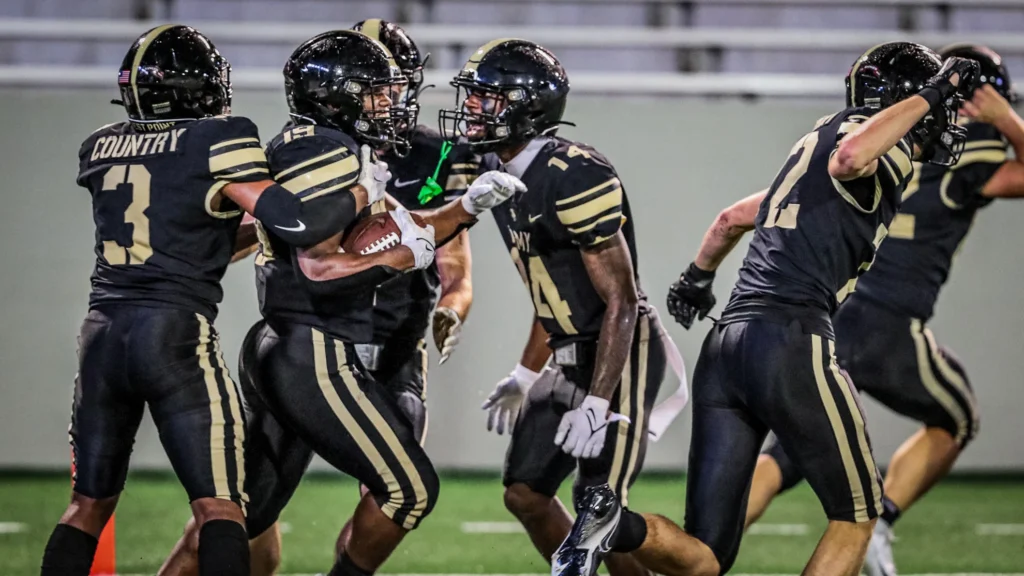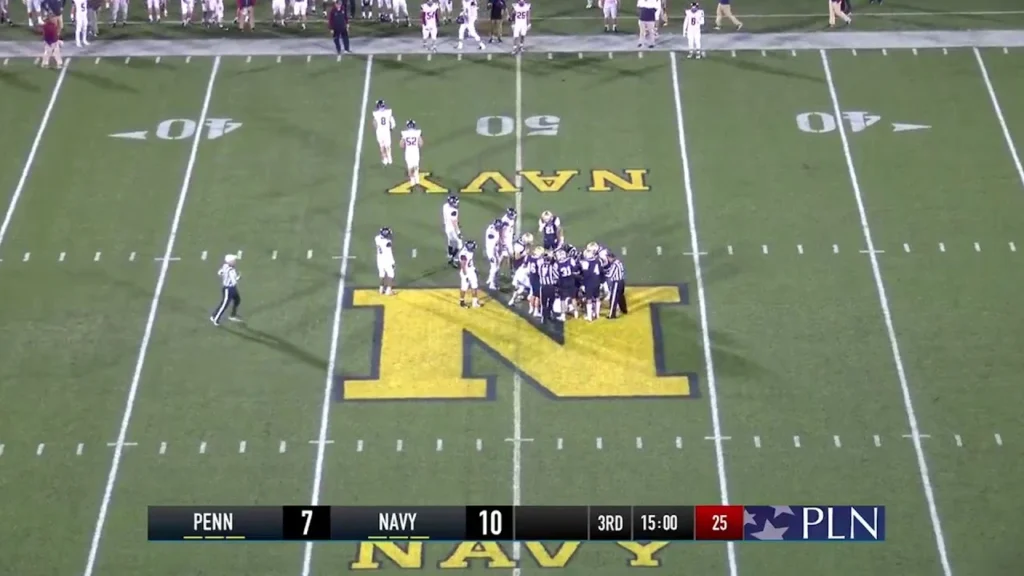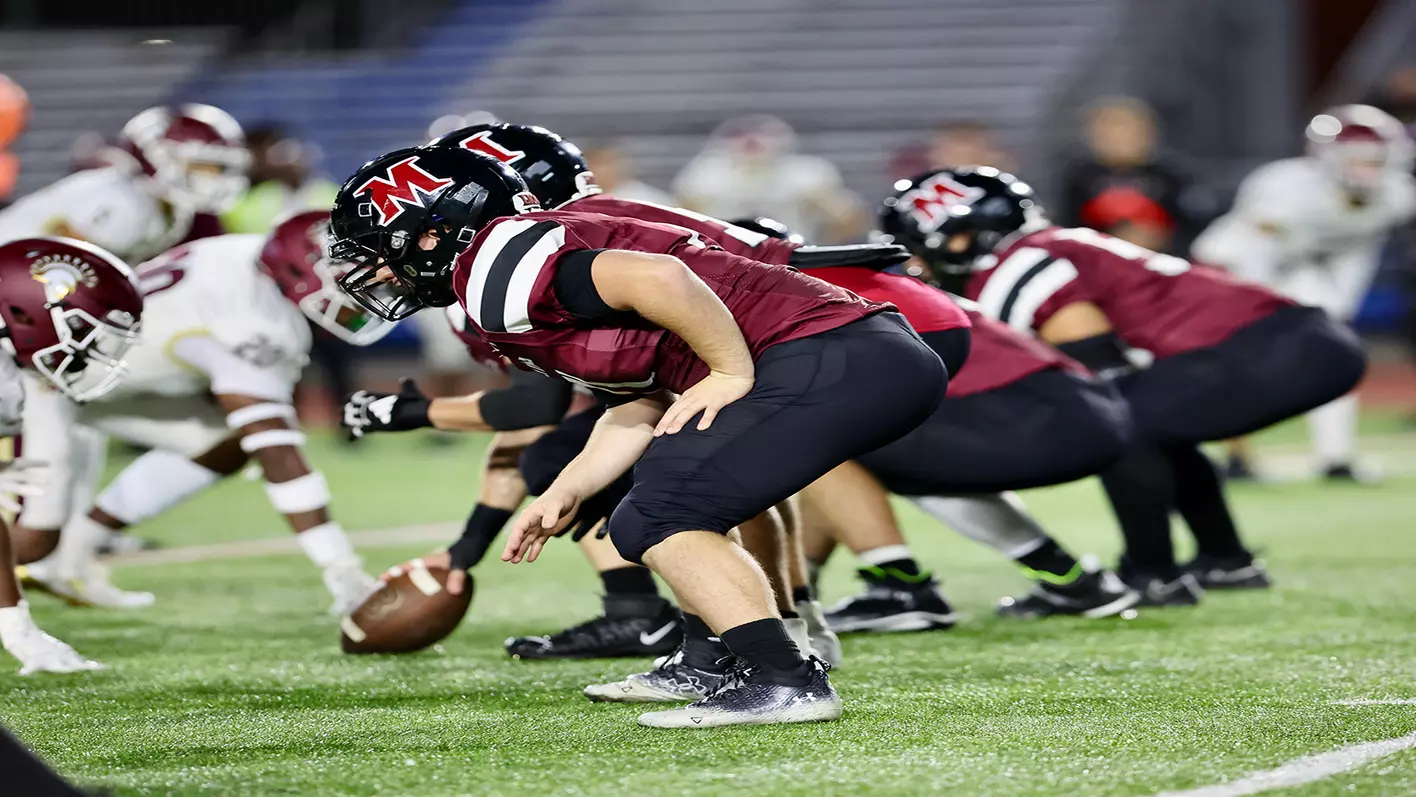Have you ever wondered what happens to talented high school football players who are quick and skilled but don’t have the size for traditional college football? There’s a special place for them to shine on the gridiron. If you’re curious about a faster, agility-focused version of American football, you’ve come to the right place. This article will explain exactly what is sprint football, a unique varsity sport with a long and fascinating history.
Sprint football is real, full-contact American football. It follows the same rules and is played with the same intensity as the game you see on Saturdays. The one major difference? A strict weight limit for every player on the field. This rule completely changes the dynamics of the game, creating a style of play where speed, precision, and agility triumph over sheer size and strength. We’ll explore the rules, the leagues, the top teams, and how this sport gives smaller athletes a chance to compete at a high collegiate level.
Table of Contents
Key Takeaways
- Weight-Restricted Sport: Sprint football is a varsity college sport where all players must weigh 178 pounds or less.
- Focus on Speed: The weight limit emphasizes speed, agility, and precise execution rather than brute force.
- Two Main Leagues: The sport is primarily governed by two leagues: the Collegiate Sprint Football League (CSFL) and the Midwest Sprint Football League (MSFL).
- Historic Programs: Prestigious institutions like Army, Navy, Penn, and Cornell have long-standing sprint football traditions.
- Opportunity for Athletes: It provides a competitive varsity opportunity for skilled football players who may be undersized for traditional NCAA football.
Unpacking the Core Concept: What is Sprint Based Football?
At its heart, what is sprint based football is a simple but game-changing idea: level the playing field by limiting the size of the athletes. Imagine a football game where every player, from the offensive linemen to the linebackers, is under 178 pounds. This isn’t a scaled-down version of the sport; it’s a re-engineered one that prioritizes a different set of athletic skills.
The game is still full-contact. Players wear the same pads and helmets and execute tackles, blocks, and plays just like in any other football game. However, because no team has a 300-pound lineman to dominate the line of scrimmage, strategy shifts. Offenses rely on quick passes, misdirection, and speed to the outside. Defenses must be incredibly disciplined and fast to keep up. It’s a brand of football that’s often described as pure and fundamentally sound. Players must rely on perfect technique and textbook execution to succeed, making it an exciting spectacle for fans who appreciate the finer points of the game.
The All-Important Weight Limit
The defining rule of sprint football is the weight requirement. To be eligible to play, athletes must weigh in at 178.0 pounds or less. This isn’t just a one-time check at the start of the season. The leagues enforce this rule rigorously.
- Official Weigh-Ins: Players are officially weighed multiple times before each game, typically four days and then again two days prior to kickoff.
- Strict Compliance: An athlete must meet the 178-pound limit at these weigh-ins to be cleared to play.
- Body Fat Minimum: To ensure players are maintaining their weight safely and not through unhealthy dehydration, there is also a rule requiring a minimum of 5% body fat.
This constant focus on weight management requires incredible discipline. Players must be dedicated to their nutrition and conditioning year-round, not just during the season. It’s a testament to their commitment to both their academics and their sport.

The Leagues: Where Sprint Football is Played
Sprint football isn’t a nationwide NCAA-governed sport in the way traditional football is. Instead, it operates through two distinct intercollegiate leagues. Understanding what is sprint football in college means looking at these two organizations.
The Collegiate Sprint Football League (CSFL)
The CSFL is the original and oldest sprint football league, with a history stretching back to 1934. It is primarily composed of schools in the Northeastern and Mid-Atlantic United States. The CSFL has a rich tradition and features some of the most prestigious academic institutions in the country.
Current CSFL Member Institutions
| University | Location | Joined CSFL |
|---|---|---|
| Army West Point | West Point, NY | 1957 |
| Caldwell University | Caldwell, NJ | 2017 |
| Chestnut Hill College | Philadelphia, PA | 2015 |
| Cornell University | Ithaca, NY | 1937 |
| Mansfield University | Mansfield, PA | 2008 |
| Molloy University | Rockville Centre, NY | 2024 |
| Navy | Annapolis, MD | 1946 |
| Penn | Philadelphia, PA | 1934 |
| St. Thomas Aquinas College | Sparkill, NY | 2018 |
The Midwest Sprint Football League (MSFL)
Recognizing the sport’s potential for growth, a new league was formed in 2021, with play beginning in 2022. The Midwest Sprint Football League (MSFL) brought the sport to a new region, expanding opportunities for athletes in the Midwest and Upper South. The MSFL follows the same weight limit and playing rules as the CSFL but operates as its own entity with a separate championship.
This expansion was a landmark moment, representing the largest single-year growth for the sport in nearly 90 years. It signaled a renewed interest in this unique form of college football.
The Powerhouses: A Look at Top Programs
While every team is competitive, some programs have historically dominated the sprint football landscape. The military academies, in particular, have established themselves as perennial powerhouses due to their large pool of disciplined, athletic cadets.
What is Army Sprint Football?
The Army West Point sprint football program is legendary. Since joining the CSFL in 1957, the Black Knights have been one of the league’s most dominant forces. Understanding what is Army sprint football is understanding a tradition of excellence and fierce rivalry. The team consistently attracts top-tier athletes from the Corps of Cadets who possess the toughness and discipline required to excel. The annual matchup against Navy is the highlight of the season, often deciding the league championship and carrying intense bragging rights. Army’s program is a model of consistency, built on a foundation of rigorous training and a deep talent pool.
What is Navy Sprint Football?
Just like their rivals at West Point, the U.S. Naval Academy has a storied sprint football program. Since 1946, Navy has been a benchmark for success in the league. Asking “what is Navy sprint football?” reveals a history filled with championships and legendary players, including former U.S. President Jimmy Carter. The Midshipmen play with a passion and precision that reflects the institution they represent. Their games against Army are monumental events, drawing thousands of fans and showcasing the highest level of sprint football competition. Together, Army and Navy have won or shared the vast majority of CSFL championships.

The Ivy League Tradition: Penn and Cornell
Sprint football also has deep roots in the Ivy League. While other Ivies like Princeton and Yale have discontinued their programs, two remain as core members of the CSFL.
What is Penn Sprint Football?
The University of Pennsylvania is a charter member of the league, having fielded a team since its inception in 1934. What is Penn sprint football? It is the story of the league’s oldest continuous program. Playing at historic Franklin Field, the Quakers have a proud tradition and have produced numerous successful student-athletes, including the late Beau Biden. The program represents the enduring appeal of sprint football at a top academic institution, providing a balance between elite education and competitive varsity sports.
What is Cornell Sprint Football?
Cornell University has also been a part of the league for most of its history, joining in 1937. Many players who join the Big Red’s team had never heard of the sport before arriving on campus but are quickly drawn to its competitive nature. What is Cornell sprint football is a testament to finding and developing talent. The program thrives by attracting tough, athletic students who may have been all-state players in high school but lacked the size for Division I football. Cornell proves that a passion for the game and a willingness to work hard are the most important attributes in sprint football.
What is a Sprint Football Team Really Like?
So, what is a sprint football team made of? The roster looks a lot like any other college football team, with quarterbacks, running backs, linemen, and defensive players. The difference is the type of athlete that fills these roles.
- Linemen: Instead of 300-pound giants, you’ll find linemen who are around 175 pounds. They are often former high school wrestlers or tight ends who are incredibly strong for their size and masters of leverage and technique.
- Skill Positions: Quarterbacks, receivers, and defensive backs are typically very fast and agile. They might be former track stars or lacrosse players who bring exceptional speed to the field.
- The “Tweener” Athlete: Sprint football is the perfect home for the “tweener”—the high school all-star who was a dominant linebacker at 175 pounds but is considered too small to play the position in traditional college football. Here, their speed and instincts make them stars.
The common thread is a deep love for football. These athletes are not on scholarship for sprint football. They play for the passion of the game and the pride of representing their school.
A Note on Speed: The Fastest Sprint in Football History
While sprint football is named for its emphasis on speed, the term can be confusing. It doesn’t refer to a specific sprinting event within the game. However, the focus on lighter players naturally leads to a faster overall game. This often brings up the question: what is the fastest sprint in football history in the broader sense?
In the world of professional football (NFL), speed is measured by the 40-yard dash and in-game GPS tracking. Players like Tyreek Hill and formerly Bo Jackson have recorded legendary times, with some clocking in at speeds over 22 miles per hour during a full sprint on the field. While sprint football players are fast, their top speeds are not officially recorded in the same way. The “sprint” in the name is more about the style of play—a continuous, fast-paced game—than a single record-breaking dash.
Conclusion
What is sprint football? It’s more than just a novelty. It is a legitimate, high-level varsity sport that has provided opportunities for thousands of student-athletes for nearly a century. By creating a weight-class system, sprint football has carved out a unique niche in the American sports landscape. It’s a celebration of speed over size, technique over brute strength, and passion over profile. Whether it’s the historic rivalry between Army and Navy, the Ivy League tradition at Penn and Cornell, or the exciting growth in the Midwest, this sport continues to offer a pure and thrilling brand of football.
If you appreciate textbook execution and fast-paced action, consider looking up a game schedule for the CSFL or MSFL. You might just find your new favorite way to watch football.
Frequently Asked Questions (FAQs)
1. Are sprint football players on scholarship?
No, sprint football is a non-scholarship sport. Players participate as true student-athletes, balancing academics and a varsity sport without financial aid tied to their athletic performance in sprint football.
2. Is sprint football the same as lightweight football?
Yes, the sport was originally known as “lightweight football.” The name was officially changed to “sprint football” to better reflect the fast-paced, agile style of play that the weight restrictions create.
3. How many teams are in sprint football?
As of the 2025 season, there are 15 teams in total. Nine teams compete in the Collegiate Sprint Football League (CSFL) and six teams compete in the Midwest Sprint Football League (MSFL).
4. Can anyone try out for a sprint football team?
Yes, any male student enrolled at a university with a sprint football program can try out, provided he can meet the strict weight and body fat requirements in a healthy manner. Many teams are built from walk-on players discovered on campus.
5. Why isn’t sprint football an NCAA-sanctioned sport?
While the member schools are NCAA institutions, sprint football itself is not governed by the NCAA. It operates under its own leagues and bylaws. This allows it to have rules, like the prohibition of athletic scholarships, that are distinct from other NCAA sports.

Leave a Reply to The Benefits of Sprinting: A Comprehensive Guide – InfoSprint Cancel reply